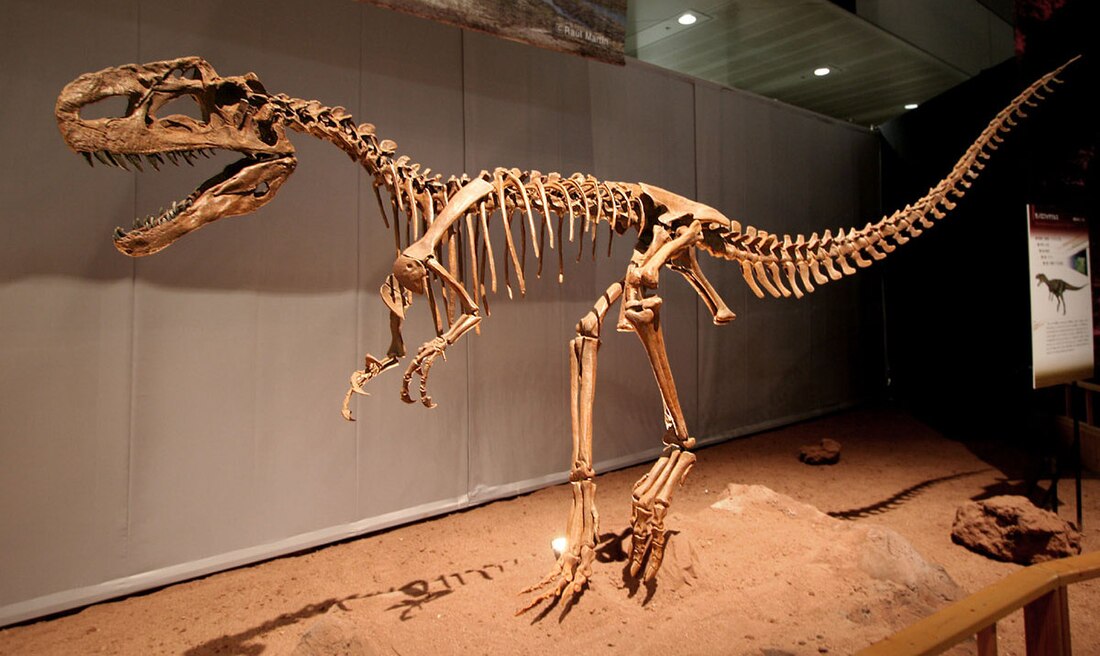Tetanurae (/ˌtɛtəˈnjuːriː/ or "stiff tails") are a clade which includes most theropod dinosaurs, including birds. Tetanurans first appear in the Jurassic. It is a large group of theropod dinosaurs. Jacques Gauthier used the term when he first applied cladistics to vertebrate paleontology.[5]
| Tetanurans | |
|---|---|
 | |
| Skeleton of Monolophosaurus jiangi | |
| Scientific classification | |
| Domain: | Eukaryota |
| Kingdom: | Animalia |
| Phylum: | Chordata |
| Clade: | Dinosauria |
| Clade: | Saurischia |
| Clade: | Theropoda |
| Clade: | Neotheropoda |
| Clade: | Averostra |
| Clade: | Tetanurae Gauthier, 1986 |
| Subgroups[1][2] | |
| |
| Synonyms | |
| |
The term refers to the stiff tail which was held above the ground as a counterweight when the animal walked or ran.
Tetanurae are defined as all theropods more closely related to modern birds than to Ceratosaurus. Gauthier considered it to consist of Carnosauria and Coelurosauria. Modern birds are the only living representatives of the clade Tetanurae.[6]
References
Wikiwand in your browser!
Seamless Wikipedia browsing. On steroids.
Every time you click a link to Wikipedia, Wiktionary or Wikiquote in your browser's search results, it will show the modern Wikiwand interface.
Wikiwand extension is a five stars, simple, with minimum permission required to keep your browsing private, safe and transparent.
